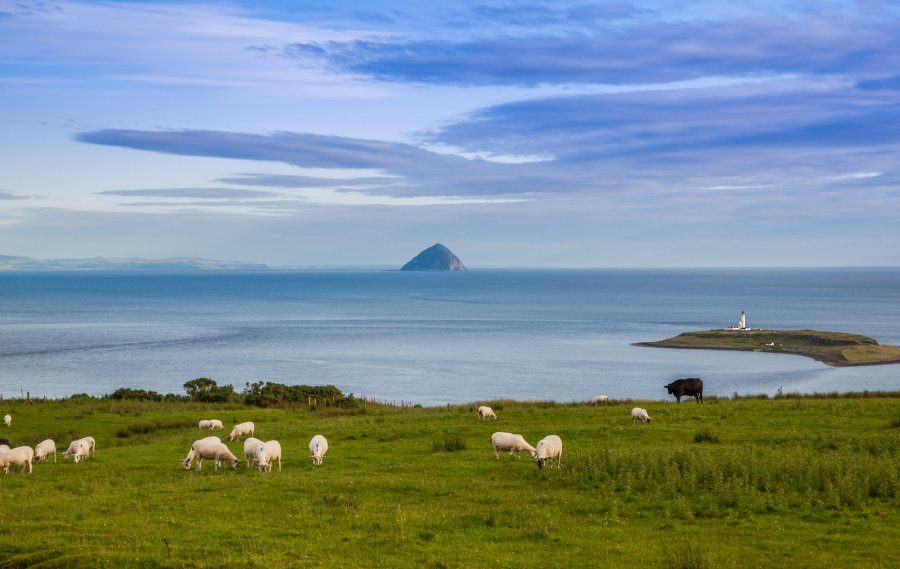
High farmer confidence levels in autumn 2020 helped support an increase in breeding ewes for the current season, according to an agricultural census.
Results from the Scottish government's census also show that the rebound in ewe numbers of 1.1% almost offset the previous year’s decline.
However, they did still remain slightly below the average for the previous five years and were down 3% on 2011.
Meanwhile, the lambing rate matched the June 2020 record of 130.6 percent, the census shows.
Analysing the results, Quality Meat Scotland (QMS) says poor spring weather may have been more localised this year, compared to the widespread challenges seen in 2013 and 2018.
"As a result, there were 1.1% more lambs on Scottish farms than a year earlier, helping explain why store lamb marketings have almost matched the highs of autumn 2020,” said QMS's senior economics analyst, Iain Macdonald.
Rising productivity in recent years means that the 3.35m lamb crop in June 2021 was around 2% above the five-year average and almost 1% larger than in 2011.
In England, the situation is markedly different, with a 3.9% decline in the lamb crop placing it 6% below the five-year average.
This was driven by a 2% reduction in ewe numbers and there were 2.6 fewer lambs per 100 ewes than in 2020.
Mr Macdonald said: “While the volume of lambs leaving Scottish farms for slaughter this season is likely to be slightly higher than in the 2020/21 season, at GB level, supply is tighter overall."
A slow marketing profile has also supported farmgate prices so far this season, according to QMS.
Defra slaughter data up to the end of September points to 15% reduction in lamb throughput at GB abattoirs between June and September compared to 2020, with volumes down 11% on the five-year average.
“Given the scale of this decline so far, slaughter numbers may begin to recover going forward, supporting availability for export in late 2021 and early 2022," Mr Macdonald said.
At auction sales, there has been some evidence of an upturn in October, with similar numbers traded to 2020.
Nevertheless, producer prices have held firm, around 20% higher than last year and 40% above the five-year average.
In the cattle sector, supply has been very tight this year, with prime and mature cattle slaughter down 5% and 7% respectively from 2020 in the first nine months at GB abattoirs.
“Census results suggest that this situation should begin to change, particularly in Scotland where cattle tend to be processed at younger ages.
"Indeed, the number of males aged 1-2 on Scottish farms was 1.8% higher than a year earlier in June,” explained Mr Macdonald.
The Scottish census also showed a more stable beef herd after a prolonged period of decline, down just 0.1% on 2020.
“Nevertheless, the herd has still fallen by more than 12% in the past decade," he said, "In England, the decline in the beef herd accelerated to 3.3%, also resulting in a 12% decline on 2011."
Labour shortages in the processing sector have had more of an impact on farmgate prices in the pig sector this autumn than for cattle or sheep due to the significant increase in availability for slaughter.
In England, there was a 6% increase in fattening pigs in June, while in Scotland, numbers were up 2% on last year.
A breakdown of the census data shows that these increases were front-loaded, with increases of 7% in the number of fattening pigs over 20kg in both countries.
Mr Macdonald says that looking further forward, a slightly slower increase in the availability of pigs for slaughter was signalled for England, with the number of piglets under 20kg 4% higher than in 2020.
“Meanwhile, in Scotland, availability is set to fall back, as there were 8% fewer piglets under 20kg, reflecting a 9% contraction in the sow herd," he explained.
“Nevertheless, Scottish sow numbers were only 1% below their five-year average and were 1% higher than their ten-year average.
"In England, the sow herd has been trending downwards over the past decade and fell another 2% in the year to June 2021."
